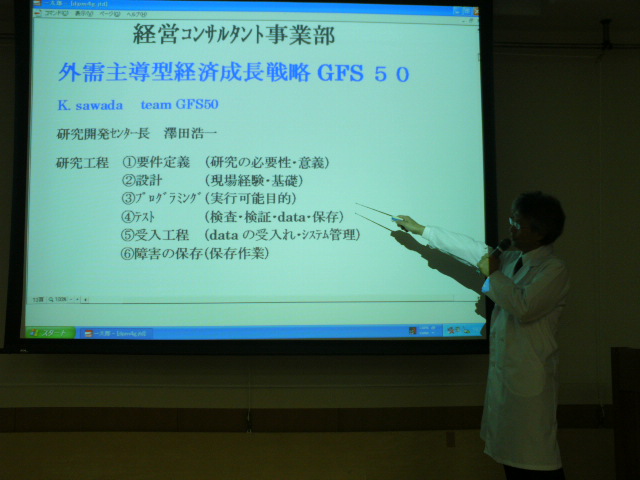
If a rough representation, international trade law, is a collection of various types of legal norms related to international trade.
These, in order to understand the international trade law, since the actual situation and the various legal norms associated with it of
international trade is in the front and back sides of the relationship,
In international trade, it is difficult to understand the international trade law without knowing the reality of the international trading.
Thus,
SCG Sawada Consulting Group Co., Ltd. 'hereinafter referred to as the SCG GROUP company.',
It is necessary to understand the reality of the international trading.
Basic knowledge of international trade
Generation development of international trade
A variety of resources on the planet have been unevenly distributed by region, including the weather conditions and geographical conditions,
That social conditions also differ by region is the fact can not be denied.
Fact hard to move this Earth that we are living, the need for international trade,
It can be said that is the main cause that has been allowed to further develop it.
And the products to be produced in the country, in other countries, but not produced in the country, the trade to replace the products to be produced,
Is where such as those found in the history of mankind, trade is a kind in international trade in the old form.
But this way the history of the international trade is very old, international trade is quality, both in terms of quantity,
Undergone a dramatic development, the modern international trading has emerged, stemming from the United Kingdom of the 1780s
Movement of industrialization due to the industrial revolution, is a worldwide trend and became the 19th century or later.
(Excerpt from the international trading Buddhist theory)
Currently, the trade of Japan is an economic partnership agreement TPP negotiations by the Pacific Rim, including the United States.
In the negotiations by the TPP,
Prices fall continuously by cheap goods overseas flows, going up the monetary value
There is a possibility to cause deflation state.
Worst case, the action is circulated, is also very likely to cause a deflationary spiral.
By the elimination of tariffs flows are cheap agricultural products from such as the United States, have a great damage to Japan's agriculture.
By deregulation, such as food additives, genetically modified food and pesticide residues, food safety is threatened.
The lifting of the ban on liberalization and mixing practice of medical insurance, is not could spread oppression and
health care disparities of National Health Insurance system.
Such a disadvantage is also expected, negotiations have bogged down.
On the other hand, it is also expected benefits, such as the following.
Liberalization of trade by the abolition of customs proceeds exports of Japanese products is increased.
By the elimination of maintenance and trade barriers, companies in the trade for the major manufacturing companies are more efficient, profit increases.
Prices rise continuously, also considered the circulation of the inflation state go down the monetary value. (SCG GROUP, Inc.)
Classical international trade
Trade by CIF conditions

For this explanation,
an important explanation for external demand-led growth strategy (GFS50) related parties.

For trade is typical of classic international trade, but there is a deal of a variety of forms,
Trade by CIF conditions that are typical for the International Sale of Goods transactions, are deployed in the usual next step.
á@ seller, conclusion of a sale of goods contract through negotiations between the buyer.
áA conclusion of a letter of credit opening contract between the buyer and the bank.
áB via the seller of the bank from the bank of the buyer, notification of letters of credit opened for the seller.
áC goods contract of carriage between the carrier to transport the object of the seller and the buying and selling
As well as the conclusion of a cargo insurance contract between the insurer.
áD seller receipt of the shipment documents such as bills of lading from the moving and transport people to transport people of the object by.
áE seller is to provide a matching ship product documents to the terms of the letter of credit and bills of exchange addressed to the buyer to own banks,
Receipt of the trading value.
áF bank of the seller is a draft and shipping documents that were purchased from the seller, sold to the bank of the buyer,
Recover the purchase price paid to the seller.
áG buyer trading banks, the draft and the shipping documents that were bought and sold to the buyer, recovery of the buying and selling price from the buyer.
áH buyer provides shipping documents to the carrier, received the moving of the object, to achieve the trading of.
If there is a reduced loss or damage of the object, reimbursement to the insurer on the basis of the insurance contract.
Features of the trade, that as seen in the step of the transaction, and the sale of goods traded principal is a transaction,
Ya minor transaction in which letters of credit incidental Foreign exchange trading for the collection of bills, transportation transaction,
four-party insurance transaction is that it is functioning effectively together. (Excerpt from the international trading Buddhist theory)
Trading incidental to trade
Foreign exchange trading

In the trade, but it caused an obligation to pay the price of goods for the seller to the buyer,
This payment obligation is fulfilled by using the foreign exchange trading.
Foreign exchange, funds transfer or cash settlement across the international having different monetary system, without having to transport the cash and gold bullion
Refers to a credit means used to carry out, in particular, credit securities such as bills of exchange or checks, Letters, communication means, such as a telegraph
It refers to the payment orders and collection orders using. (Excerpt from the international trading Buddhist theory)
Letter of credit
Order to proceed smoothly the transaction, as Kaitoreru seller with confidence banks documentary to draw for the price recovery,
To the negotiating bank, at the request of the buyer, that the bank of the buyer, insert a written commitment to the settlement of the documentary
But it is generally carried out, writing that a commitment to the settlement of this documentary is a documentary letter of credit.
Letters of credit, in addition to this, there is that banks to issue letters of credit to suppliers of creditors and counterparties,
In this way the letter of credit to be issued in place of the guarantees referred to as a stand-by letter of credit.
(Excerpt from the international trading Buddhist theory)
Carriage of goods traded
In trade, that produces a need to move from a location of an article was the sale subject to other locations (transportation),
It is a typical example.
As a means of transportation of the goods involved in international trade, maritime, land, but aviation of 3 means can be considered,
In general, it is often performed by marine transportation by ship.
As a form of contract of carriage of goods by sea, there is a charter contract with the individual product contract of carriage.
(Excerpt from the international trading Buddhist theory)
Container transport and combined transport
Along with the increase of container use in maritime transport, in order to perform the transportation by a plurality of transportation
means under a single contract of carriageĀ@So that more than one carrier is involved.
For example, after the maritime transport the Sea of ??Japan the articles of the European market from Japan, and railway transportation Siberia,
as well as the European inlandĀ@The importance of multimodal transport, such as the Siberian land bridge has been increasing.
(Excerpt from the international trading Buddhist theory)
Insurance deal
During transport of goods by trade, loss of goods in the middle of transportation, breakage, as damage and transport means, such as theft
A ship that is used, railway, automobile, such as damage to receive, such as aircraft, transportation difficult Avoid be accompanied by danger to the deal.
Measures to confront dangers of these various is a subscription to the property and casualty insurance (insured).
Party must bear the risk (insured) is, pay a premium to conclude the insurer and the insurance contract,
In return, the risk of the subject of insurance in the event of reality will be subject to compensation for damage caused from the insurer.
From the subscriber to the insurance, a series of transactions leading up to the compensation of damage is referred to as the insurance transaction.
Specifically, for the maritime transport, and cargo insurance for the goods is the trade of the subject, is a means of transport
Is usually the ship insurance for the ship is insured. (Excerpt from the international trading Buddhist theory)
International intellectual property transactions
The international intellectual property transactions, use rights related to trade and intellectual property rights for the purpose of
transfer of intellectual property itself (license)Setting is divided into a transaction for the purpose of.
If the contents of intellectual property rights is related to technology, by setting the transfer of intellectual property rights or use rights,
From where the technology transfer between the parties, can also be referred to as a technology transfer deal.
Not in the content of intellectual property rights, but to complete the technology to help industrial purposes or which of the need to apply in practice,
Know-how that can be called applied technology knowledge and documents are also, along with the intellectual property rights in
international intellectual property rights trading Often the subject of trade. (Excerpt from the international trading Buddhist theory)

Trying to explain the international trade that then was legally seen
NEXT